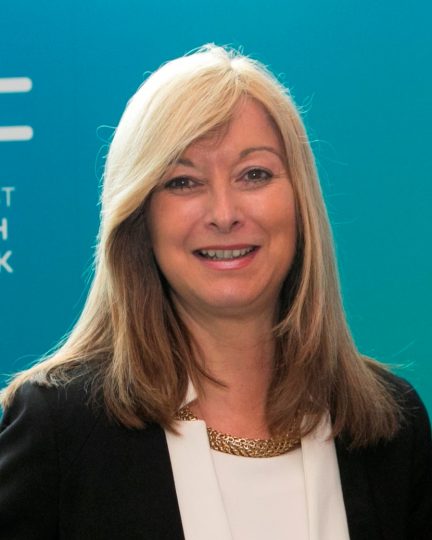
Blog: Dr Liz Mear NHSA Director and Chief Executive of the Innovation Agency
Dr Liz Mear on why the use of technology in health care is truly mind-blowing
I love technology but my 18-year old frequently tells me off for using it like a granny – his words not mine, sorry to all tech-whiz grannies out there.
By using this phrase he means I sometimes ring people to have a chat instead of texting. I use FaceBook and Twitter instead of Instagram and I am one of the last people on earth, according to my teenager, to prefer telephone banking to online banking due to having worked on a telephone banking desk in the very early stages of my career. In his eyes, and probably in the opinion of most young people, I am a technology dinosaur.
But out of the home and in my day job as Chief Executive of the Innovation Agency and Chair of the national Academic Health Science Network (AHSN) I am constantly reminded that the use of technology in healthcare is truly mind-blowing.
This week we have been reading about nanorobots targeting cancer tumours and reducing toxins from cancer drugs.
We have fabulous diagnostic technology that can sequence our genes and inform us about addressing lifestyle issues, or make sure we receive the right treatments so we live to a ripe old age.
A piece of technology, supported and promoted by many of the 15 regional AHSNs is the AliveCor device that helps people to detect atrial fibrillation (AF), which can cause strokes. This tiny ECG device fits on the back of a smart phone and is used alongside an app. If AF is detected drugs can be prescribed, which prevent stroke.
FloHealth is a simple texting service that supports people to be independent in managing their long term conditions. Regular texts assessing key disease indicators allow the person and their carers/ health support workers to keep in control of symptoms and prevent hospital admissions. Collectively the AHSNs have supported 33,000 people to use this service.
These are examples of spectacular breakthroughs in science and the use of sensors and mobile phone technology to support us to be healthy and live great lives.
I am sure that all of us would be very happy to use the health technologies I have outlined above and also will be aware of many more that we think are fantastic.
In my role of Northern Health Science Alliance Director I have been very pleased to support and work on the Connecting Health Cities programme. This programme is focused on the responsible use of personal health and care data to enable support systems to be planned around the needs of the public – aka you and me.
Using data from public sector IT systems, would give the entire health and care sector the opportunity to respond to the real needs of people using services and would save lives.
We can all see the benefit of using technology to improve our lives on an individual basis but in the media we continue to read stories that suggest we ‘the general public’ don’t want our data to be used to plan services better and maybe save our life or the life of a loved one.
In Scotland one in 20 people has diabetes (www.nhsresearchscotland.org.uk). Data of people with diabetes was used to plan services around their needs and this resulted in a reduction of diabetes-related amputations by 50% and there was also a reduction in blindness due to diabetes.
When I read this very tangible example of how data can be used to save life and limb (literally) I concluded that I really would like my data to be used for this purpose and think this is another great use of technology.
In the words of the excellent Farr Institute ‘Data saves lives’ let’s make sure we support our techies and researchers to enable it to save ours.



